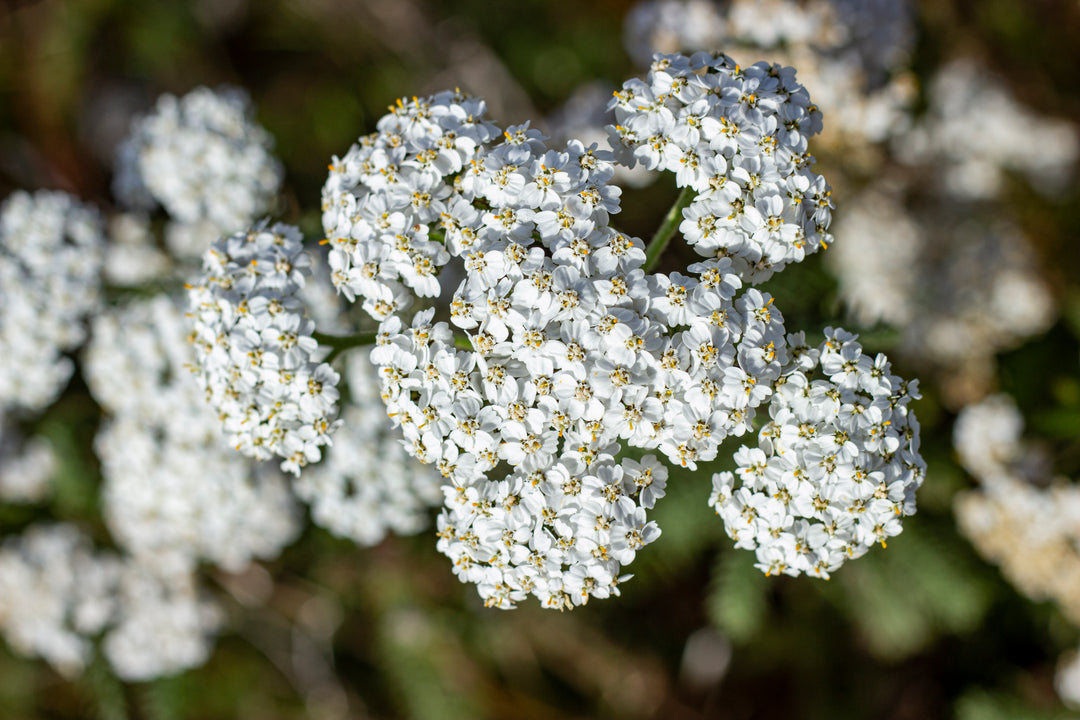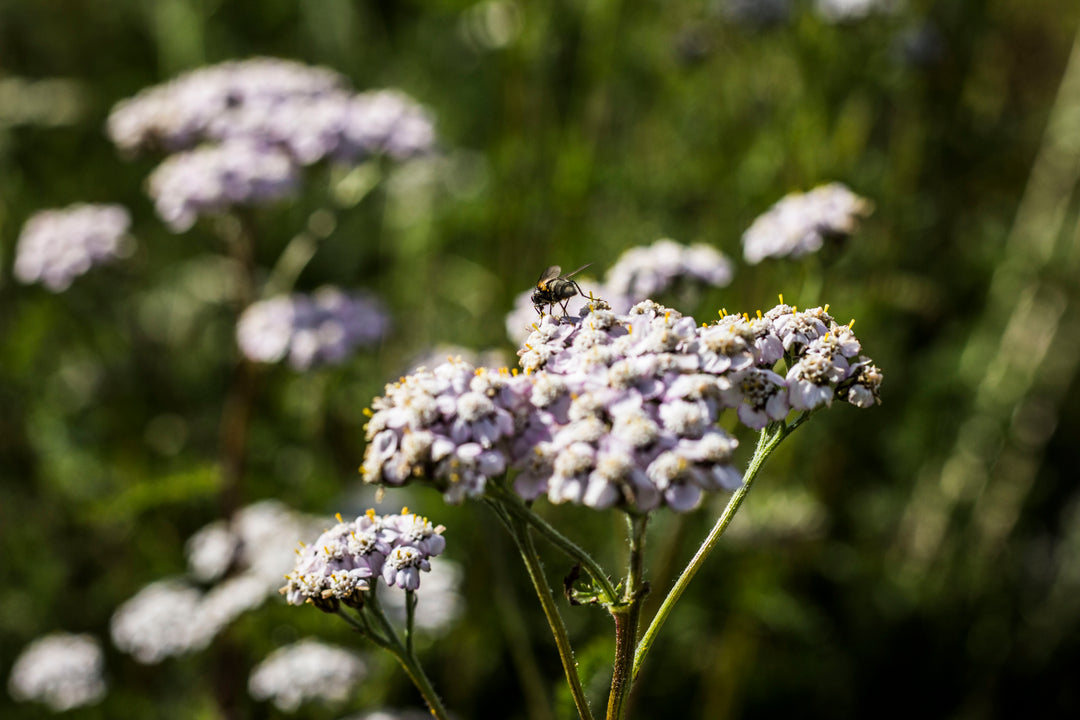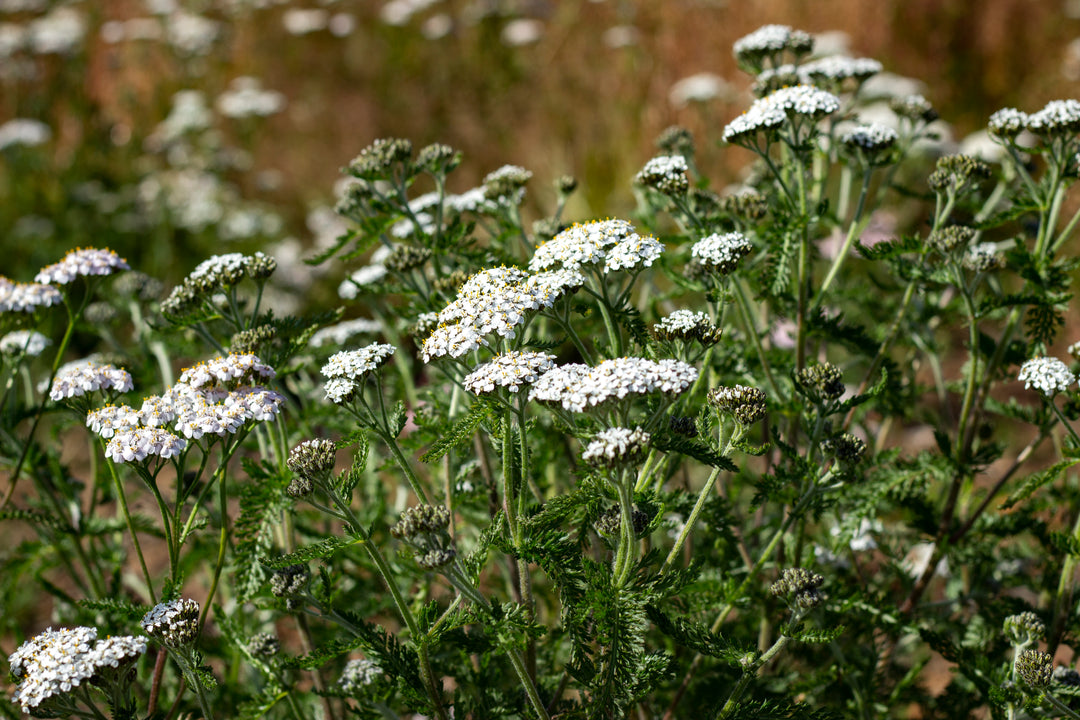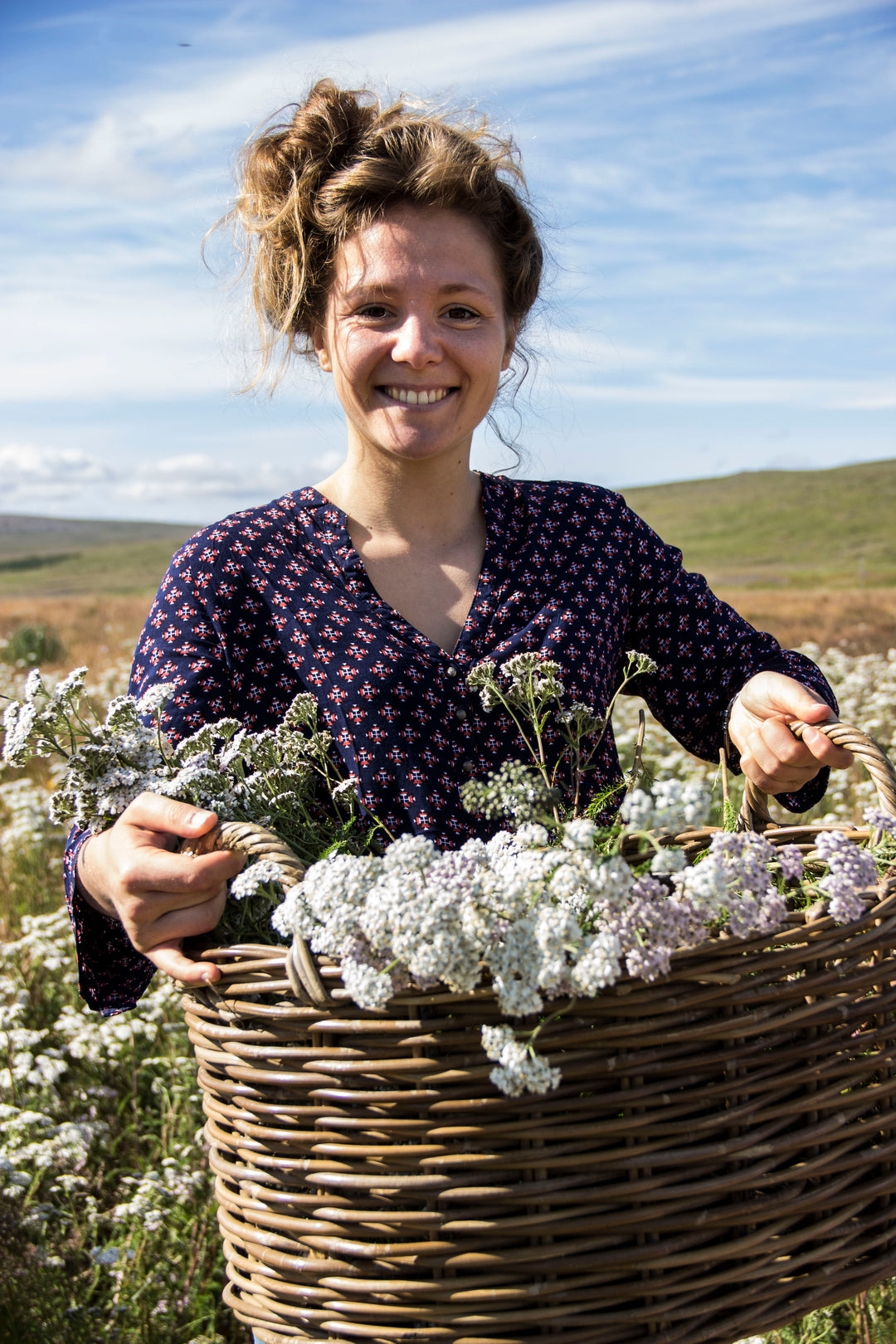Yarrow - Achillea Millefolium

History
Yarrow is one of the oldest known medicinal plants in the world.
Traces of yarrow pollen were found in a 65,000 year old grave and the use of yarrow as medicine has been attested in Ancient Greece, Rome, China, and among several Native American cultures.
It has been used to speed wound healing, reduce blood loss, correct menstrual problems, reduce pain, and calm gastrointestinal upset.
Studies
Modern clinical analysis has justified its reputation as a panacea or cure-all.
One study shows that yarrow essential oil has a higher level of azulene, a calming phytochemical and antioxidant, than any other essential oil, including chamomile.
Numerous other studies have been done which demonstrate yarrow’s efficiency in healing damaged skin quickly and cleanly.


Effects
Yarrow's efficacy and chemical composition varies considerably across the world. The kind we have in Iceland is quite potent and has seen centuries of use. The Vikings took a salve of yarrow with them when going into battle in case of injury. They also used it to flavour tea and beer.
We use yarrow in our recipes because of its powerful calming and healing effects. We believe it will help reduce the appearance of pores and first signs of ageing and will contribute to healthier skin in the long run. In our hair products, it contributes to shiny and healthy growth.
Origin
We harvest and pick our wild yarrow from untouched lowlands in the south of Iceland.

References:
·Wendy L. Applequist and Daniel E. Moerman. “Yarrow (Achillea millefolium L.): A Neglected Panacea? A Review of Ethnobotany, Bioactivity, and Biomedical Research”. Economic Botany. June 2011
· N. V. Sizova. “Composition and antioxidant activity of essential oils containing azulene derivatives”. Pharmaceutical Chemistry Journal. September 2012, Volume 46, Issue 6, pp 369-371
· Farnood Shokouhi Sabet Jalali , Hossein Tajik, Mojtaba Hadian. “Efficacy of topical application of alcoholic extract of yarrow in the healing process of experimental burn wounds in rabbit”. Comparative Clinical Pathology. April 2012, Volume 21, Issue 2, pp 177-181
· Kathleen Stokker. Remedies and Rituals: Folk Medicine in Norway and the New Land. St. Paul: Minnesota Historical Society Press, 2007. p. 43
· Anna Rósa Robertsdóttir. Icelandic Herbs and Their Medicinal Uses. trans. Shelagh Smith. (Berkeley, CA: North Atlantic Books, 2016)
